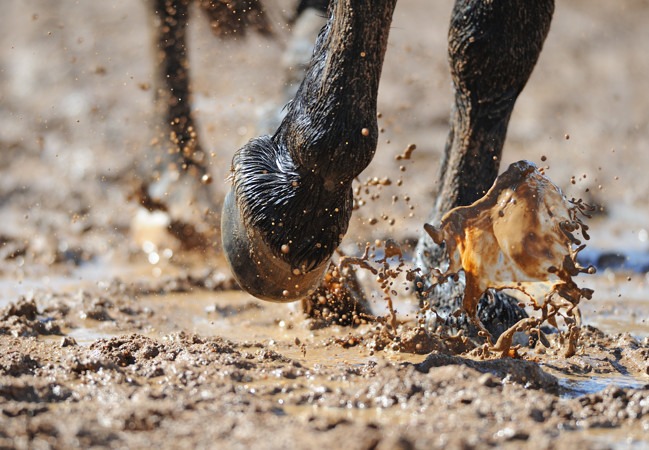Common winter skin conditions
16 Nov 2022
Rain scald/mud fever
This infection of the top layer of skin is caused by Dermatophilus congolensis, which is neither strictly a bacteria or a fungus, but resembles both. It can live on horses’ skin causing no problems, until wet and warm conditions stimulate it to release spores and spread infection.
Young horses, older horses with weakened immune systems (Cushing’s disease), and those continually exposed to moisture are most likely to be affected. Scabs and crusts can spread very quickly, especially under a rug, and this condition is painful.
Treatment often requires anti-inflammatories and antibiotics, though topical shampoos and creams will also help. Clipping the hair around affected areas is often necessary, but medication will only be successful if the horse is removed from the wet environment which triggered the episode. Dermatophilus can be spread between horses, and also via human handling, so care must be taken to clean living areas and shared equipment.
Lice
Small (1-2mm) flightless insects which live in the hair. They primarily move from host to host by direct contact, but can stay alive in clumps of groomed hair and dandruff, which might come into contact with another horse, thus spreading the infestation.
Two species of lice affect horses, Damalinia equi (chewing lice) and Haematopinus asini (sucking lice). Lice eggs, or nits, are glued to the hairs near the skin, and take 3-4 weeks to hatch into adult lice. Horses will bite or rub affected areas; the hair may be damaged and small scabs may form on broken skin. Ordinary shampooing and washing will not dislodge nits.
Lice are visible so diagnosis is straightforward. There are several topical sprays/washes which we can prescribe to kill lice.
Mites
Unlike lice, mites are too small to be seen with the naked eye. These microscopic creatures do not live in the hair but actually invade the skin, causing intense irritation and hypersensitivity reactions similar to allergies. The skin is very itchy, hair loss and scabs are common, and there is often localised inflammation.
The two most common types of mite which affect our UK horse are leg mites (Chorioptic mange mites), and forage mites.
Leg mites, or feather mites are usually found in the feathers of draft and cob-type horses. Biting and stamping the feet is a cardinal sign. Severe cases show crusty dandruff, hair loss and scabs with skin becoming more and more thickened with time. Symptoms commonly subside in summer and then return during the colder months. Treatment is usually successful, but may require clipping of the feathers for topical products to be able to reach and adhere to the skin. Products licensed for farm stock are often employed, either a course of injections or a spray/wash.
Forage mites live in hay and straw, and transfer to the horse while they are eating it. Raised bumps and little scabs are seen on the face and neck. Treatment is usually with topical sprays/washes.
Ringworm
Caused by fungi Trichphyton and Microsporum, which live mainly in the soil, but can also survive on wooden posts and walls. The transfer to horses occurs during rolling or lying down, or through contact with contaminated objects. Contact does not always result in an infection, but the fungi do flourish in wet conditions and spores can spread across the surface of the skin. Ringworm spores also spread easily in the environment, with rugs, tack and grooming equipment all potential sources of infection.
Not always ring-shaped, the lesions start off as patches of raised hairs. These hairs usually fall out and the skin underneath looks raw. The result is bald areas with scaling dandruff which eventually heal as the hair grows back.
Ringworm is zoonotic – it can easily be passed to humans via direct contact.
Microscopic examination of skin scrapes and hair plucks is used for diagnosis.
Repeated washes with an anti-fungal solution is successful.
